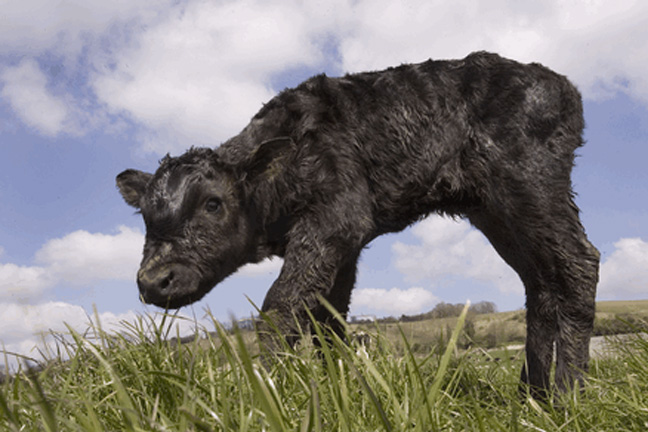
Agricultural News
Selk Offers Tips To Reduce the Risk of Calf Scours in Fall-Calving Herds
Wed, 27 Aug 2014 10:33:24 CDT

Glenn Selk, Oklahoma State University Emeritus Extension Animal Scientist, writes in the latest Cow-Calf Newsletter. (Adapted from "Neonatal Calf Diarrhea Complex" by John Kirkpatrick, DVM)
Fall calving in the Southern Plains has several advantages. One of the least-discussed advantages to fall-calving is the reduction of risk to an outbreak of scours. Neonatal calf diarrhea (commonly called "calf scours") is one of the most costly disease entities in the beef cattle business. Fall-calving herds have the help of the hot, late summer sunshine to reduce the buildup and spread of the pathogens that cause calf diarrhea. However, whether you have spring or fall-calving cows (or both) there are some key management procedures that will reduce the likelihood of a scours outbreak in your calves. These procedures are meant to decrease the pathogen exposure to the newborn calf. Other measures will be discussed in a later newsletter that are intended to increase the immunity that protects the calf from the pathogens in his environment.
1) Calve in clean and dry areas.
2) Calve heifers earlier than the cow herd.
3) Avoid congregating
a) Avoid hay feeding in calving pastures by setting aside pastures during the summer to stockpile forage for utilization during calving time.
b) Move pairs to larger pastures promptly
c) If hay is fed, use hay feeders and move feeders frequently.
4) Use biosecurity and biocontainment measures for all herd additions:
a) Isolate, quarantine, and perform appropriate tests on all herd additions.
b) Introduce pregnant herd additions at least 30 days prior to the start of calving season. This will allow time for exposure to new pathogens, antibody development and secretion of antibodies into the colostrum.
c) Do not add calves to the herd until the youngest calf in the herd is over 30 days of age. Buying a calf at a livestock auction or from a dairy for a cow that has lost a calf can introduce diseases that your herd may not have immunity against.
5) Isolation and treatment:
a) Remove sick calves from the herd immediately. One sick calf can produce overwhelming pathogen exposure by shedding as many as 100 million bacteria or viruses per milliliter of feces (500 million bacteria and or viruses per teaspoon of feces).
b) Visit with your local large animal veterinarian to determine best treatment options for the pathogens affecting your calves.
c) Treating the sick calves should occur after handling the well calves. Clean and disinfect all equipment. Clothing, boots, gloves, etc. worn while treating sick calves should not be worn when handling well calves.
WebReadyTM Powered by WireReady® NSI
Top Agricultural News
More Headlines...



















